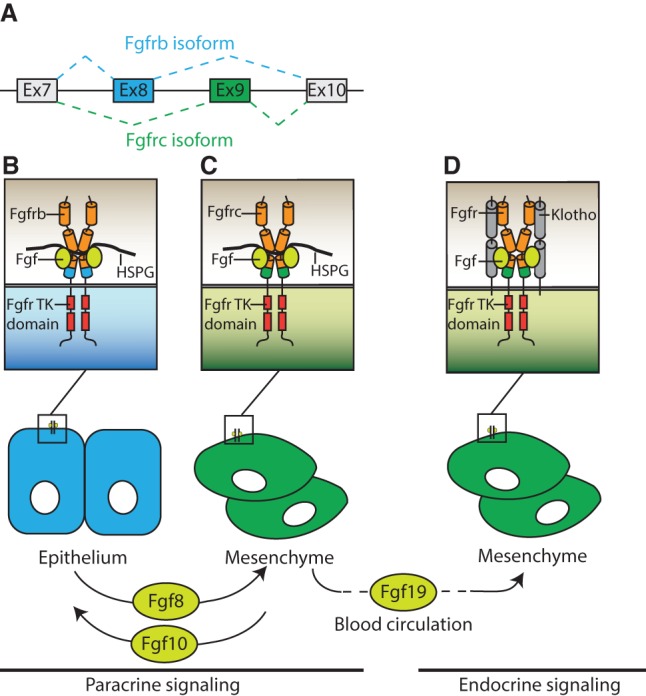Figure 1.

Fgfr alternative splicing facilitates interactions between epithelial and mesenchymal tissues. (A) Alternative splicing of exons 8 and 9 generates b and c isoforms of Fgfr1–3, while exon 10 encodes an invariant transmembrane domain. (B,C) Fgf ligands expressed in epithelium engage Fgfrc isoforms in the adjacent mesenchyme (B), while ligands expressed in the mesenchyme activate Fgfrb isoforms in the epithelium (C). Paracrine signaling also depends on the heparan sulfate proteoglycan (HSPG) coreceptor. (D) Endocrine Fgf ligands use Klotho coreceptors rather than HSPGs. (Ex) exon; (TK) tyrosine kinase. The exon, Fgfr isoform, and cell type specificity are color coded, with blue and green representing epithelium and mesenchyme, respectively.
